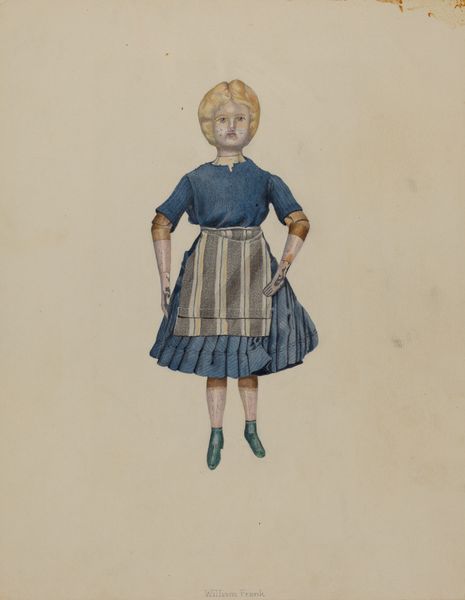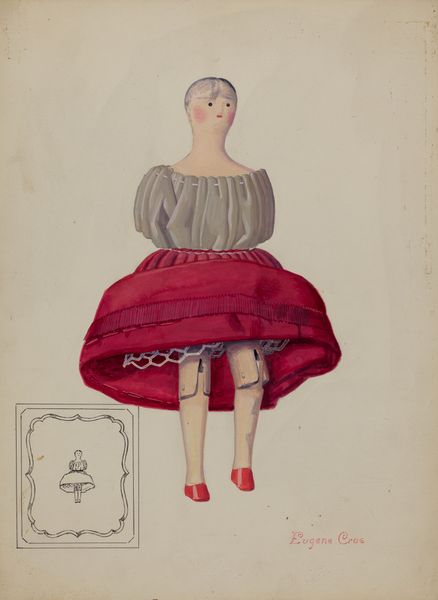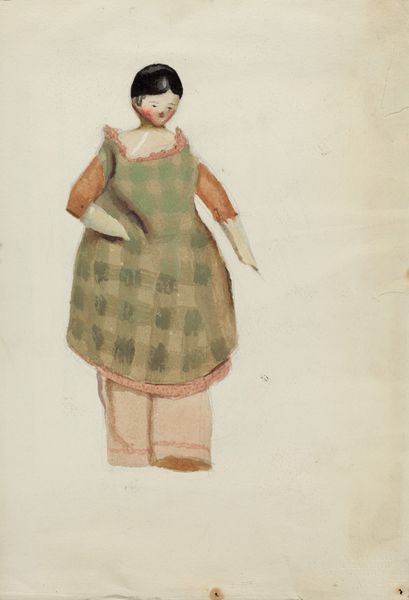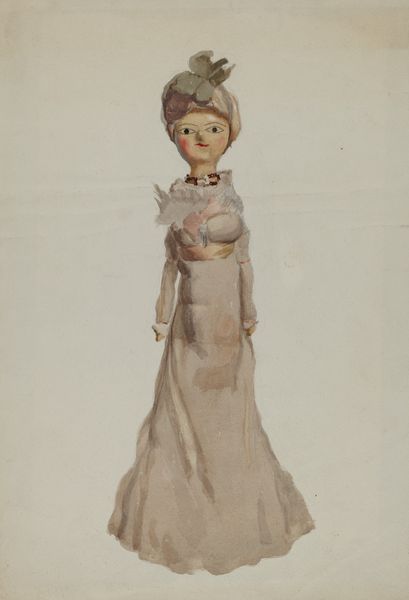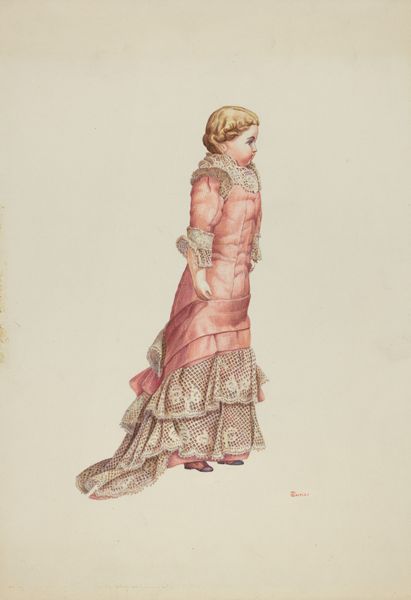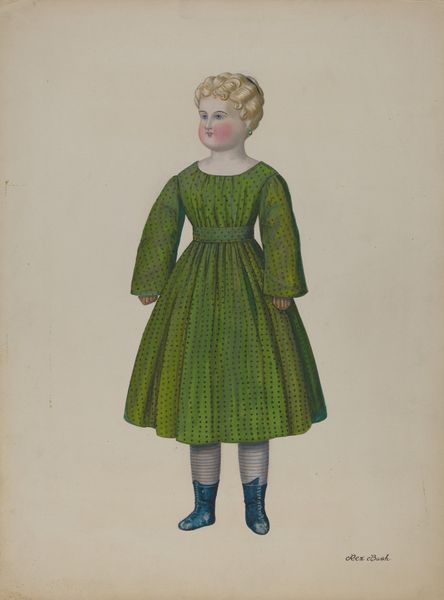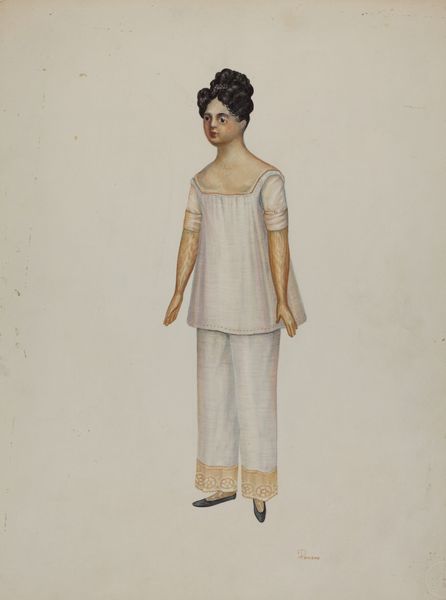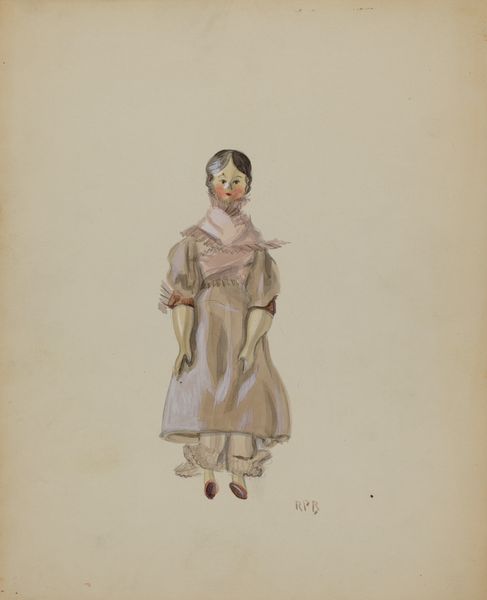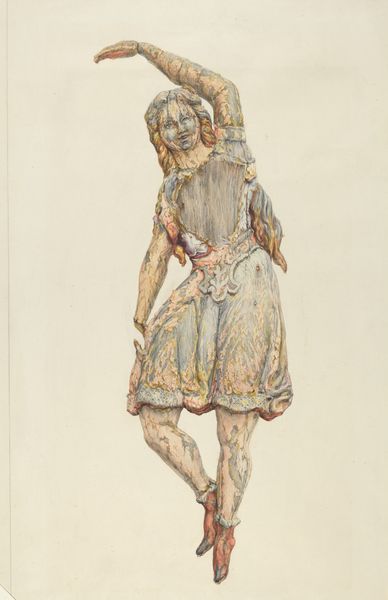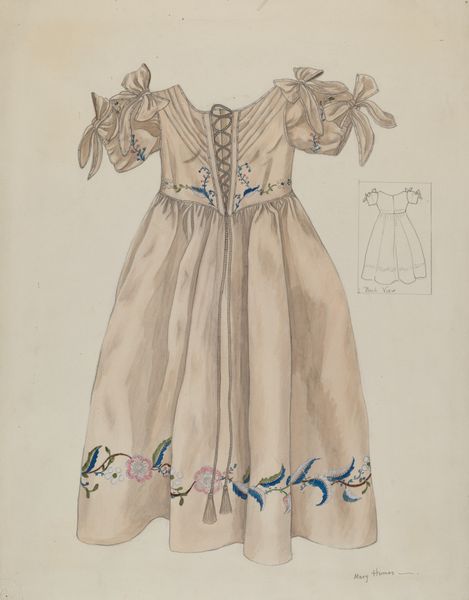
drawing, coloured-pencil
#
portrait
#
drawing
#
coloured-pencil
#
figuration
#
coloured pencil
#
academic-art
Dimensions: overall: 29.1 x 22.8 cm (11 7/16 x 9 in.) Original IAD Object: 11 1/8" high
Copyright: National Gallery of Art: CC0 1.0
Editor: Here we have Francis Law Durand's "Doll," made between 1935 and 1942, a coloured pencil drawing. I find the composition a bit unsettling, the doll is captured in such a clinical manner...almost like a study. How do you interpret this work? Curator: The clinical, almost detached, presentation is precisely what intrigues me. Consider the doll itself as a representation of idealized girlhood. Then consider the historical context: the late 1930s, a period of immense social upheaval and shifting gender roles. Editor: I see... Curator: The doll, often seen as a symbol of innocence and domesticity, is here rendered almost mechanically. Is this perhaps a commentary on the societal expectations imposed on women, reducing them to mere objects, like dolls? Durand presents the subject almost as a specimen to be examined. Notice the fragmented views of the head: What might that suggest about the fractured or dissected nature of identity? Editor: It’s a disturbing feeling! I initially saw the separate head drawings simply as "testing" the appearance of the subject but I realize there is more complexity there... It does not portray innocence as one might assume, considering the doll's identity. Curator: Exactly! And consider the artistic choices - coloured pencil, often associated with childhood itself. Yet, here it's used with a stark precision. It makes you think about the artist’s intent in challenging normative ideas, about assigned roles, beauty and womanhood. Editor: The work prompts a dialogue about the external observation versus the actual subjectivity and experience of the girlhood. Thank you for shining a light on the nuances of this piece! Curator: The pleasure is mine. It is vital that we question these conventional ideas and give space for diverse points of view, understanding art as an act of critical observation and a potent tool for cultural analysis.
Comments
No comments
Be the first to comment and join the conversation on the ultimate creative platform.

